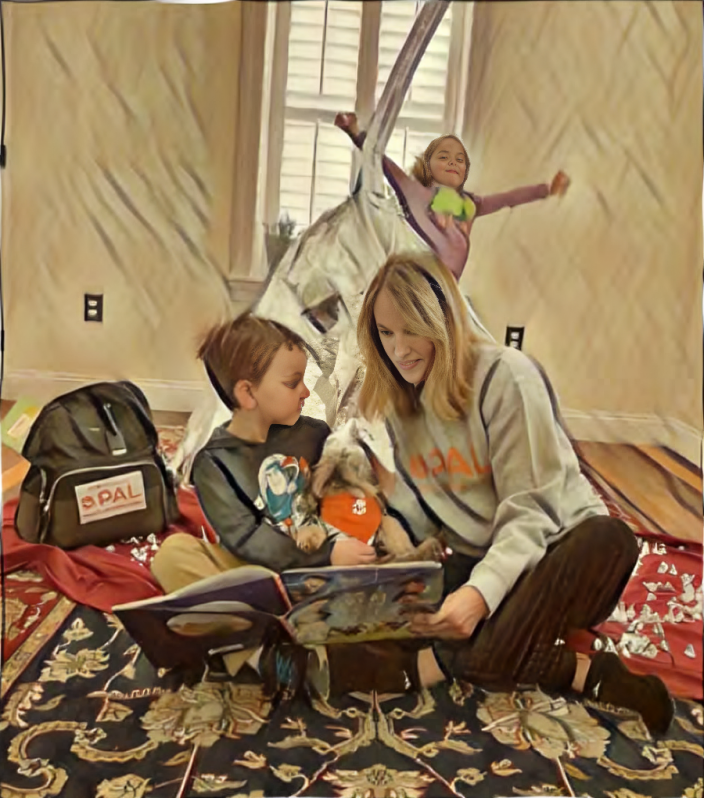Creative Activities to Extend the Learning Experiences for Children
The benefits of integrating a reading therapy dog into the learning environment don’t end with the final page of a book. You can always extend the fun and learning with a registered therapy dog through creative activities and help deepen children’s educational experiences. Creative literacy-based activities make learning more interactive, engaging, and impactful and are likely to leave a lasting impression on children’s motivation for learning.Below are some engaging ways in which you can build on the foundations laid by learning programs that include reading therapy dogs.
Write and Share Stories
Reading and writing are very connected for children. After reading aloud to a therapy dog, you can encourage children to write letters or stories to the therapy dog. Children can share their thoughts about the book they read, a favorite section, or something that they learned. Alternatively, they could write a creative story, share other favorite books, or write about an experience that they have had with a pet. Building on the reading experience with the therapy dog allows the children’s writing to be more authentic, allowing them to reflect on the reading experience and share their thoughts and feelings more openly.
Create Themed Artwork
Art is a great option for communicating thoughts, feelings, and learnings. Incorporating other activities involving art into the learning process can be beneficial and motivational for children. Art is a powerful and more accessible medium for children to explore and express their emotions. You can invite them to create drawings or paintings inspired by their readings or interactions with the therapy dog. This can include illustrating their favorite story moment, imagining new adventures with the dog, or depicting the dog in various school activities. These types of activities enhance children’s power of imagination, reinforce reading comprehension, and encourage creative expression.
Develop Literacy-based Games
Children love to play, and they learn a great deal through all types of play. Building on the concept of play through word games strengthens children’s literacy and makes learning a lot more fun for them. Having children become word detectives by selecting new, interesting words from the story allows them to develop a broader vocabulary. Selecting key vocabulary words from the story can be extended into creating rhyming words games, allowing children to experience patterns of written language in a fun and engaging format. Treasure hunts with clues based on the book read to the therapy dog or creating word banks with personalized illustrations provide active engagement while enhancing literacy development in a playful context.
Participate in Community Events
In addition to schools having registered therapy dogs work with students as a component of their literacy program, there are other opportunities to extend children’s literacy development. Many public libraries offer “read to a therapy dog” programs on a monthly or bimonthly basis. If not, consider meeting with local librarians to discuss the many positive outcomes that registered reading therapy dogs provide. Consider having children who have read to a therapy dog be permitted to share their experiences when exploring new settings for involving therapy dogs. Encouraging students to share their positive experiences also helps strengthen their public speaking skills and broaden their development in terms of confidence and personal development.
Participating in these events promotes social skills, community involvement, and a love for reading. They also provide a platform for children to highlight their reading progress and celebrate achievements with peers and family.
Reflect and Set Goals
Use the experience of reading with the therapy dog as an opportunity for children to begin the process of setting personal learning goals or targets. Begin with discussions about what the children enjoyed during their reading sessions and what challenges they faced. Next, move on to what skills the children wish to achieve next (the sky is the limit… maybe it’s increased confidence in reading aloud, or gaining a wider vocabulary or building new relationships, just to name a few!) This step-by-step approach helps facilitate self-reflection in children through guided conversations, journaling, or the creation of a personalized scrapbook with the therapy dog as the central theme.
Extending the children’s learning experiences beyond the actual reading aloud to a therapy dog has so many educational opportunities. It can have a significant positive impact on children’s social-emotional, academic, and personal development. By embracing these creative extensions, educators and therapy dog handlers can provide a more holistic educational experience that fosters social-emotional growth, creativity, and a lifelong love for learning.
